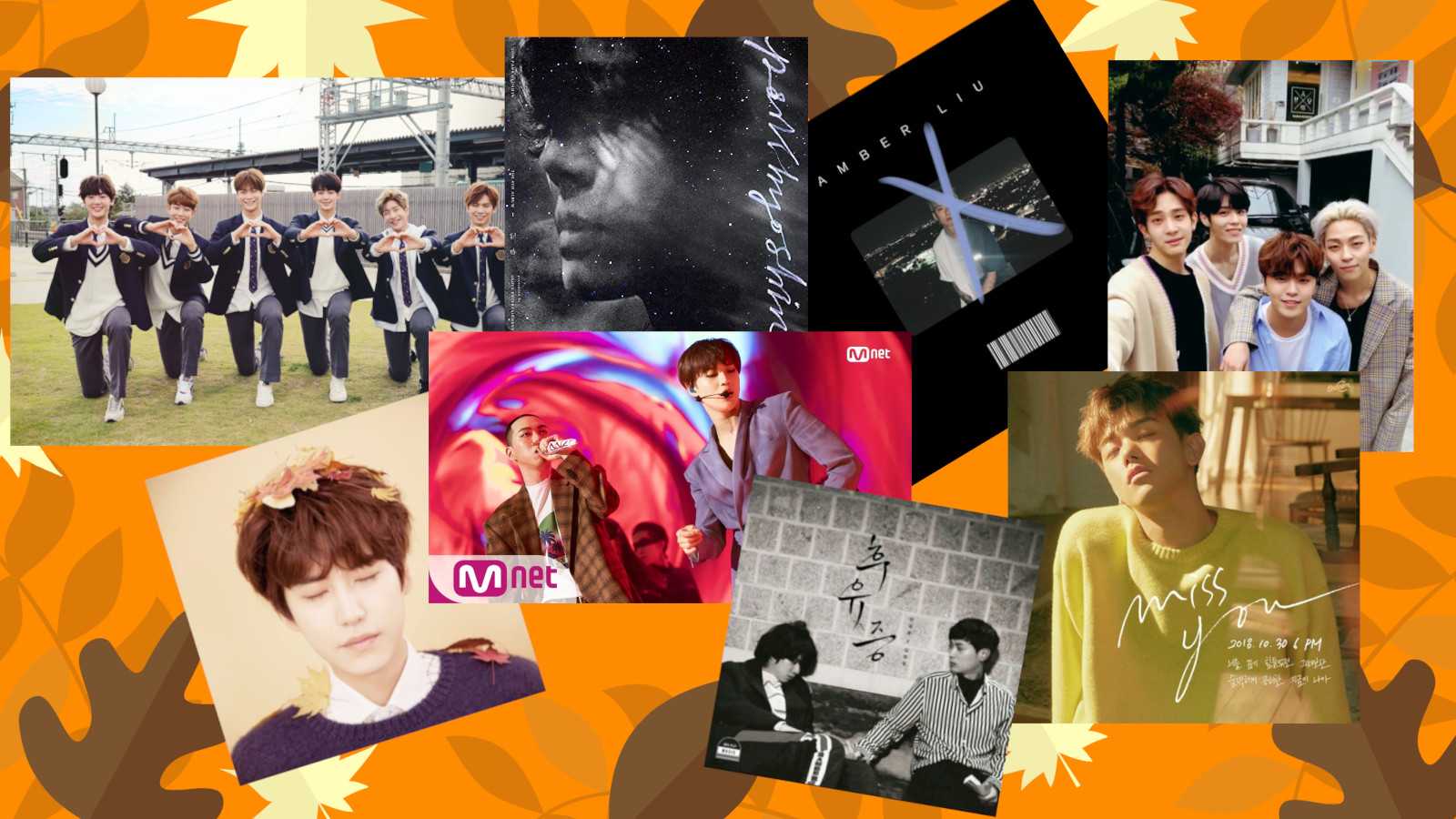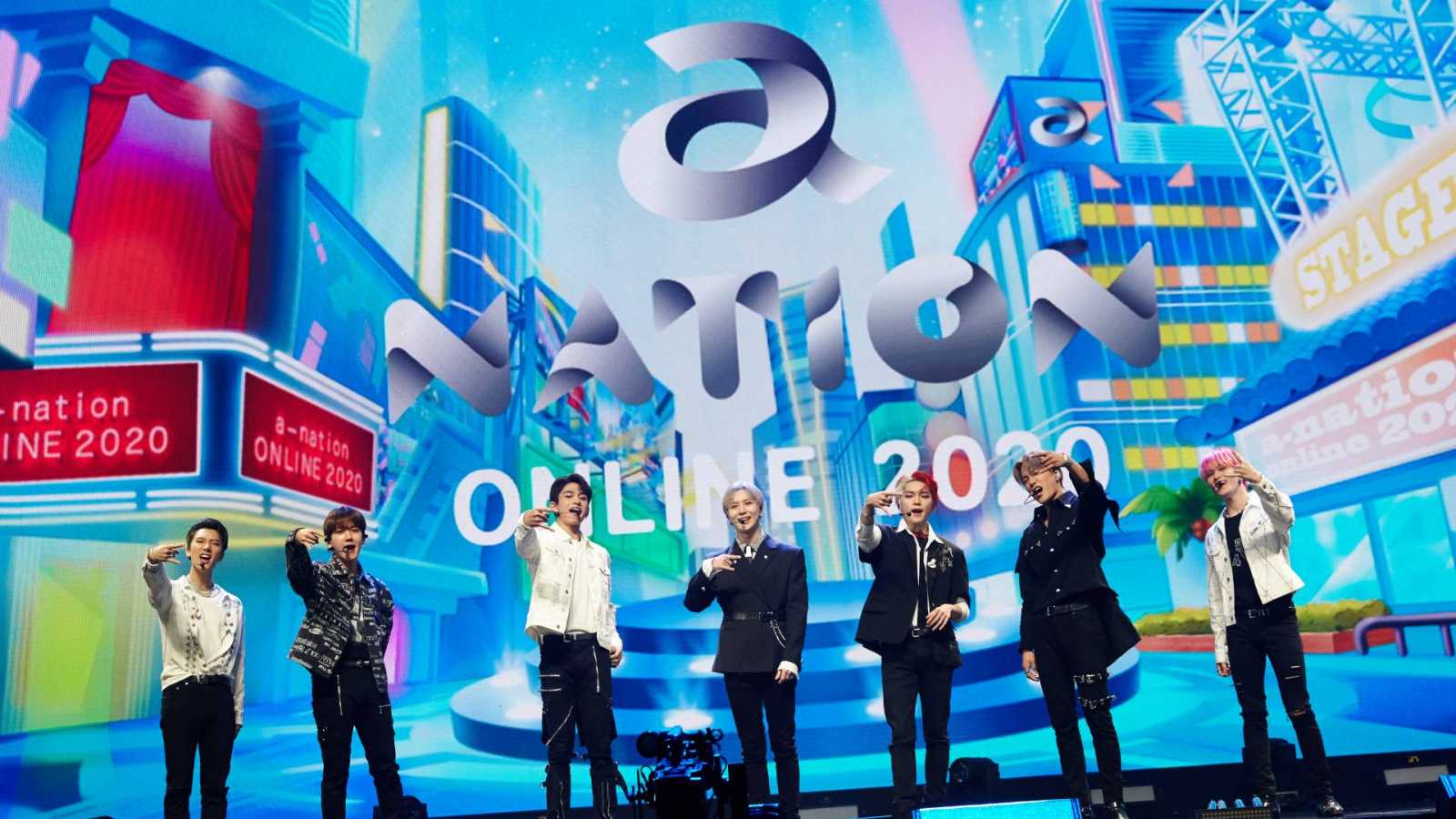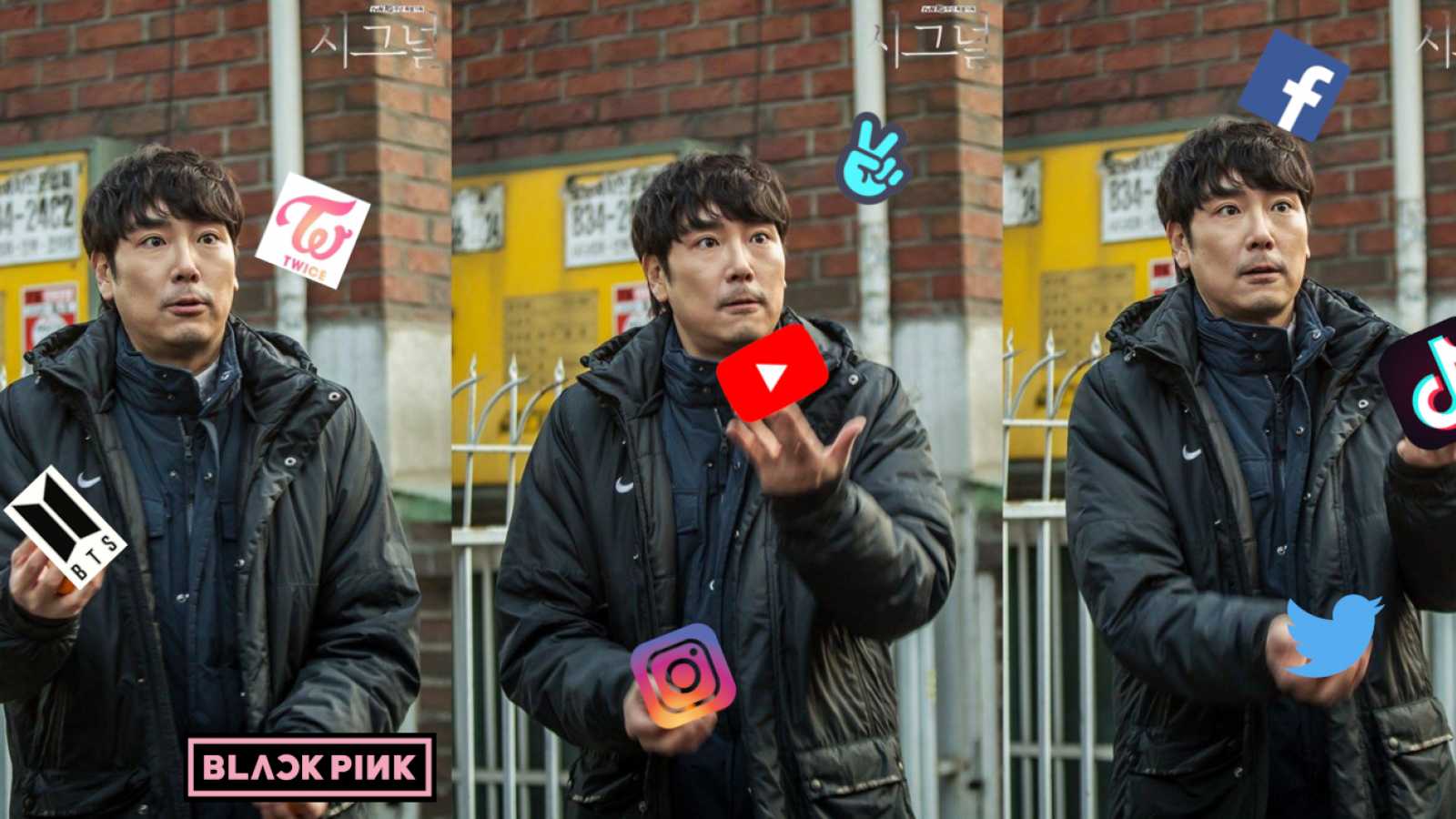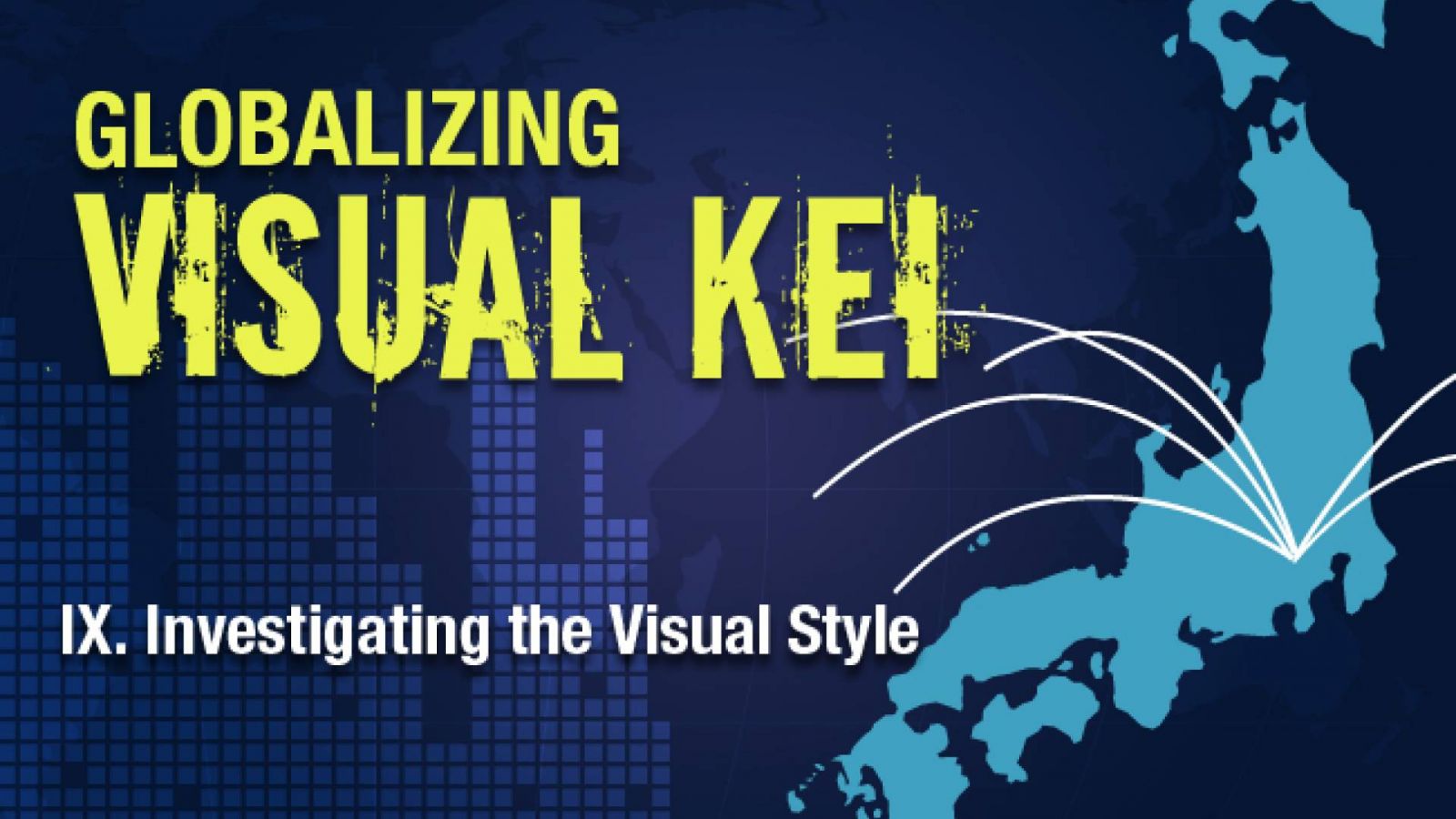Visual kei, translated as “visual style," is a Japanese rock music style characterized by bands performing while dressed in intricately designed costumes with strong androgynous flair. While visual kei began as a purely rock-oriented genre, its sound eventually spread to reflect pop-rock, electronic rock, western-styled alternative and even metal while retaining its distinct visuals.
Beginning as an underground scene in Japan, over time, visual kei saw a brief boom of activity within mainstream Japanese music and in recent years, overseas. This globalized phenomenon caused a stir through music scenes worldwide, creating a new audience who suddenly turned their attention to a country which many had not previously acknowledged for its music. Despite this new found interest, the scene has remained a subculture worldwide. Although visual kei’s main activities thrive only in Japan, it is a scene home to a plethora of fans across the world; however, for most non-Japanese fans, their primary activities take place online. Yet these fans relish in the ability to find refuge from the norms of daily life, international friends and for many, exceptionally unique music. Like many visual kei bands, industry personnel and fans across the globe believe that visual kei is not just a music or fashion style but a lifestyle; one which should be dispelled from stereotype and discrimination and instead receive its chance for worldwide recognition.
Author’s Notes
As a Japanese music enthusiast who has experienced the scene from several sides of the spectrum, I found visual kei to be a music style that could attract mainstream attention, but like many other wild styles in the past, such as electronic, hardstyle, etc., it has been heavily overlooked by mainstream audiences for simply being outrageous and different. While someday the dream of mainstream acceptance may become a reality, in the meantime, visual kei remains an underground scene.
Many fans do not realize the difficulty involved in promoting and organizing band events overseas, nor do they understand the financial aspects of visual kei. This ranges from the poor pay of musicians, lack of sales and mainstream Japanese awareness, to the fact that many have multiple jobs to support their music lifestyle. While much of the music management world and even the press feels these aspects are not always important for fans to know, I tend to disagree; I think a well-rounded view of how the scene truly works enables fans to fully appreciate not only the music but all of the people who dedicate their time and hard work to making it all possible.
When I visited Japan for the first time eight years ago, I was like many misled fans and believed visual kei to be mainstream and beloved by most Japanese people. I was very surprised to find the reality of visual kei: tiny venues, the same fans at a variety of shows, and very few true resources to purchase the music. Further, when asked about visual kei, most Japanese people either had no idea what it was, or laughed. Over time, both within Japan and in the United States, I saw the scene grow, but it never made it to the mainstream music market; the scene stalled out and while it has fluctuated in public interest, it has never surpassed that point.
This web series first started as a twenty-eight page paper written over five months for a Japanese culture class; my project was subsequently chosen as the winning project for the
2011 CEPEX Japan studies research award. It has now been modified for publication, with extra material added exclusively for JaME.
In the paper, I intended to discuss how visual kei started and popularized overseas, and the problems that exist in the scene. I conducted
surveys and interviews of fans, the press, event organizers, anime conventions and the general population, compiling empirical data (data derived from experience, first-hand observation and interviews) to determine how the scene looks from all sides of this diverse music style. In the research I conducted for this, I became aware of how little information there was on visual kei in English, and further, how little scholarly-styled information existed which could be used in research papers. After completion, I decided to publish my work to remedy this. I have kept all citations and sources intact and I have not changed technical wording in the hopes other researchers will find this useful in the future.
Schedule of Releases
I. June 5: Introducing Globalizing Visual Kei: A Web Series
II. June 12: Behind the Scenes of Visual Kei
III. June 19: The Rise of Visual Kei — US and Central/South America
IV. June 26: Interview with Jimi Aoma
V. July 3: The Rise of Visual Kei — Europe, Oceania and East Asia
VI. July 10: Musician Interview Excerpts
VII. July 17: Visual Kei and Anime
VIII. July 24: The Business Side of Visual Kei: Interview Excerpts
IX. July 31: Investigating the Visual Style
X. August 7: ]Marketing Overseas
XI. August 14: Interview with Kiwamu, Starwave Records
XII. August 21:Visual Kei Today and the Future of Visual Kei
XIII. August 28: Full Survey Results for Worldwide (6,384 votes)
Read the full series
HERE.
The History of Visual Kei
According to the authors of the book
Visual Kei no Jidai the first form of glam rock started in the 1970’s in England, spawned by
David Bowie and
T-Rex. Glam rock soon crossed the ocean and was popularized in the United States by
KISS in 1973. While the glam rock scene did not catch on in Japan until after the “big hair” phase of the mid 1980’s, American thrash metal assisted in the creation of the next phase of Japanese rock music: Visual Rock Era I. The authors of the book further detailed a number of transitions that visual kei evolved through over the years following this initial phase. Visual Rock Era I lasted just over a decade and was the birth era to rock bands,
X JAPAN and
LUNA SEA, two of the biggest visual artists in Japan, both of which are still musically active today. The era was defined by solid rock music with wild costumes and makeup and extremely teased hair. This era was also the origin of
Nagoya Kei the first deviation from “kote kei,” or the “traditional style” of visual kei. Based out of the Aichi Prefecture in Nagoya, bands that rose from this style over the next decade had a distinct somber look and were notable for their tendency to disband with members resurfacing in new bands with the line ups made up of a mixture of members from previous bands.
Visual Rock Era II began in 1993, and encompassed bands such as
MALICE MIZER,
GLAY and
L’Arc~en~Ciel. Ironically, both of the latter two bands today are no longer associated with their visual roots. During this era, the visual look was of higher quality than previously seen. Additionally, there was a greater diversity in the music produced by bands. It was during this era, around 1995, that mainstream Japanese music took notice of visual kei, causing a boom among the general population which lasted for the next four years.
In 1997, during the time neo-glam was thriving in America with
Marilyn Manson, visual kei underwent its next change, the Visual Rock Era III. This was the era of bands such as
La’cryma Christi, ROUAGE and
PENICILLIN. This period was one of exceptionally bright, detailed costumes, and continued variations in sound, helping to define visual kei as its own genre and fashion style. Additionally, this era saw the inception of more styles derived from the original kote kei, such as the emergence of “Eroguro Nansensu Kei” (“erotic grotesque nonsense style”) which focuses on eroticism and has been used by a variety of visual kei artists (notably
cali≠gari) and “angura kei” (“underground style”) with bands who wear traditional kimono or Japanese uniforms. This era also produced “ouji kei” or “prince style," known to western audiences as “kodona kei," or “boy style.” Ouji kei was coined by
Ryutaro, vocalist of
Plastic Tree, and is often described as the “boy version of Victorian lolita clothing.
1
It was in 1999 that the mainstream music movement for visual kei ceased in Japan, and the scene solidified as an underground style for the country.
2 The general population began to view visual kei as similar to the otaku (“nerd”) generation — visual kei was only for listeners who were strange, rebellious, and non-conforming to proper society due to its wild visuals and often androgynous-looking band members. It was due to this stereotyping that visual kei is often associated with teenagers.
3
In 2001, visual kei saw yet another transition, the Visual Kei New Generation. During this phase surfaced the cheerful “oshare kei” (“fashionable style”) that changed not only the look but the sound of visual kei, producing a much happier, pop-rock type of sound often accompanied by very bright attire. It was in this period that bands were more sharply dressed than ever before, with intricate music and lyrics. It was also during the New Generation that visual kei journeyed overseas. The first overseas performance in Asia took place in Taiwan with
LUNA SEA in January 1999
4 followed by the first western event in the United States with
Duel Jewel in 2002.
5
The most recent visual kei evolution was the Neo Visual Kei, which occurred around 2004
6 at the same time when Europe and Central and South America experienced their first visual kei band in 2004 and 2005 respectively.
7 This era produced an influx of new bands which flooded the scene and has been unhappily attributed with a number of band break-ups, including many popular visual kei bands from the Visual Kei New Generation. This era is arguably still in occurrence, with many fans complaining that Neo Visual Kei has produced many “copycat” artists, visual artists who are too similar in design and sound.
8
Like many music scenes in existence today, visual kei has undergone a number of changes, evolving the style to how it exists today. Yet within the style, the bands themselves continue to transition and grow, making visual kei a scene which is in constant growth and change yet continues to remain distinct.
Next Week …
Join us again next Sunday as we walk through frequent misconceptions about visual kei, look into some monetary realities and discuss the social stigma that still hangs over the music style today.
_______________________________________________________________
[1] "Ryotarou x CHRISTOPHER NEMETH", Gothic and Lolita Bible, Vol. 1, 2001.
[2] Kiwamu Kai, E-mail interview, February 13, 2011.
[3] Cameron Scholes, E-mail interview, March 31, 2011.
[4] "
Luna Sea First Asian Tour in Hong Kong 1999", last modified December 15, 2010, "
Luna Sea", last modified May 24, 2011.
[5] “
Project A-Kon”, last modified April 4, 2011.
[6] "
Shinjidai ni Totsunyu! Neo Visual Kei Band Taidō no Kizashi" Oricon, June 7, 2006, accessed March 15, 2011,
[7] "
JaME Schedule", last modified April 14, 2011.
[8] "
Globalizing Visual Kei: Fan Survey", last modified March 11, 2011.




















